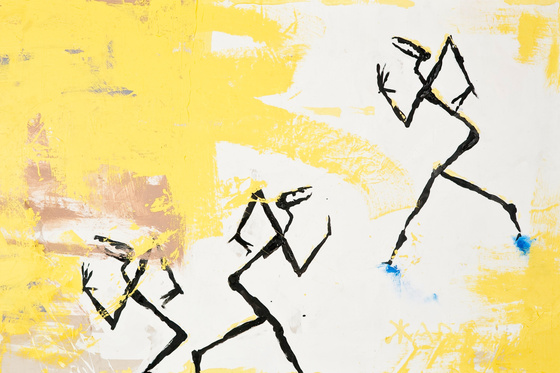
The Moscow Biennale’s hundreds-strong array of special projects and parallel shows, not to mention the main exhibition at Garage, is fast bearing down upon us, with only two weeks until it kicks off. The event has so generously spread its tentacles over practically every city venue you’ve heard of (and some I haven’t) that there is almost nothing on for a long time that isn’t in the Biennale. So over the coming weeks, I’ll be writing from the Biennale’s various high and low points as they unfold — my hand is pretty forced.
In the interests of transparency, I should admit that I have translated and copy-edited both the Biennale’s catalogues, so take this with as big a pinch of salt as you like. (Why in Russia it is perfectly acceptable for me to do this and then write about the event, whereas in the West this would be unimaginable, is a subject for another entry.) This included translating an actual artwork in its entirety. That’s right, not the text written to it, not the text in it, but the actual artwork — which is a legal document.
For its author, Moscow Conceptualist Yury Albert, this is par for the course. Like many artists who came of age as one of the loosely-grouped Soviet-era “non-conformist” artists, Albert has long explored the textual dimension of visual art. But instead of inverting Soviet slogans and repeating them ad absurdum, like Komar and Melamid, or making paintings to illustrate a story he’d written, like Pavel Pepperstein, words are not just the focus but the very nuts and bolts of Albert’s work.
He is perhaps best known for his “text paintings” — at first glance just blank canvases with words on them, but with a keen eye for the complex and unstable interrelationship between the visual and the written. Statements like, “It’d be great to do an artwork that wowed everyone” sound both optimistic and ironically bland. “What tradition was this work made in?” makes the standard art-school question sound absurd and unimaginative. My personal favorite turns an admission of defeat into an instantly recognizable Albert: “My work has entered a crisis. I’m confused, perturbed, and don’t know what to do next.”
You’re never quite sure what to make of them. Mostly, it’s a testament to Albert’s wit that art so self-referential doesn’t get tiresome, unlike much Western conceptualism. Perhaps its best asset is the way it retains its intellectuality — putting it right at the fore, although without ever going over your head. As he says, “It’s a funny little thing that makes you want to work it out. It’s not just for watching, but for thinking.”
There are two chances this month to, um, read Albert in action. Just opened is a group show at the Stella Art Foundation featuring Albert alongside fellow Moscow Conceptualists Viktor Skersis (who has a small personal retrospective on at SAF’s other venue) and Andrei Fillipov called “An Artist and his Model.” This is a veritable conceptual smorgasbord conceived as a kind of jazz improvisation, featuring Albert’s text works alongside “confessionary cabins” and an “infernal pool” — a sign that just as critics are ready to museify and canonized the movement, its members have still got a lot more up their sleeve.
And the legal document I mentioned at the beginning? Albert is also in the Biennale’s main exhibition, but instead of producing a visual artwork like everyone else, he has come up with a “prize.” Nobody’s going to want it. The winner, selected by the exhibition’s artist, will receive 450,000 rubles...to be spent on his funeral in the event of his death before the next biennial. I’d love to see the voting behind the scenes. There must be a strong temptation to leave out one’s favorite artist in the show in favor of the one most likely closest to death, just to see what happened. And mental images like that are what Albert’s work is all about. The art is in the words; you have to picture it yourself.

